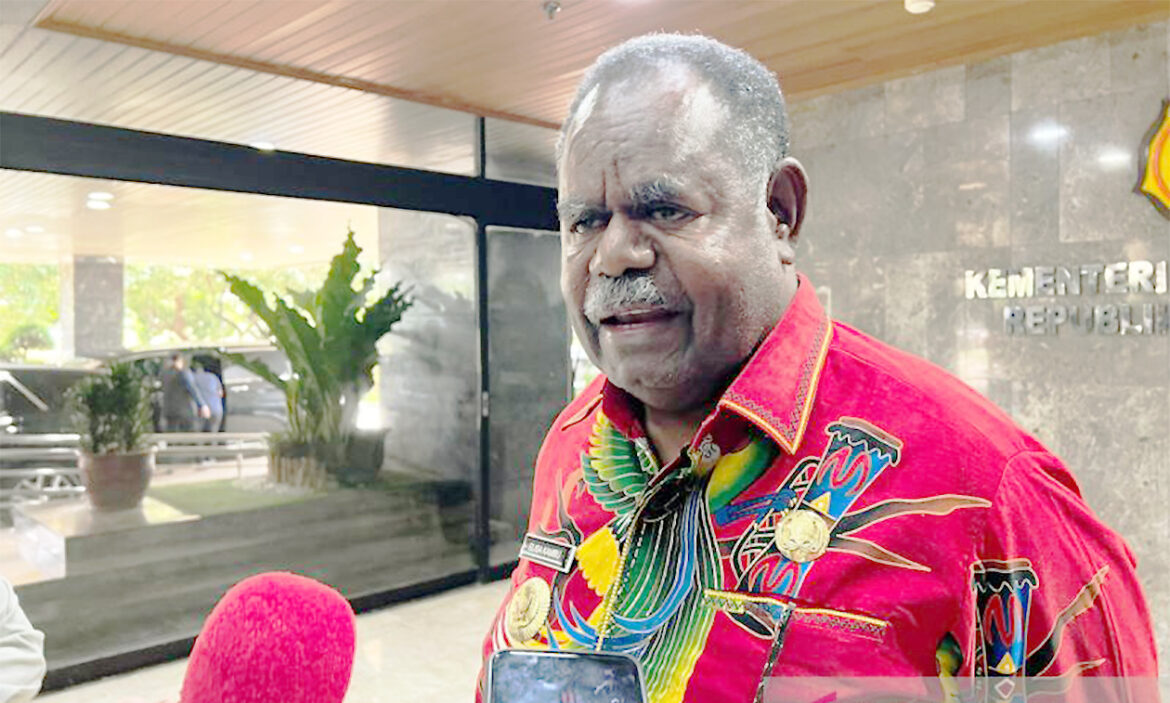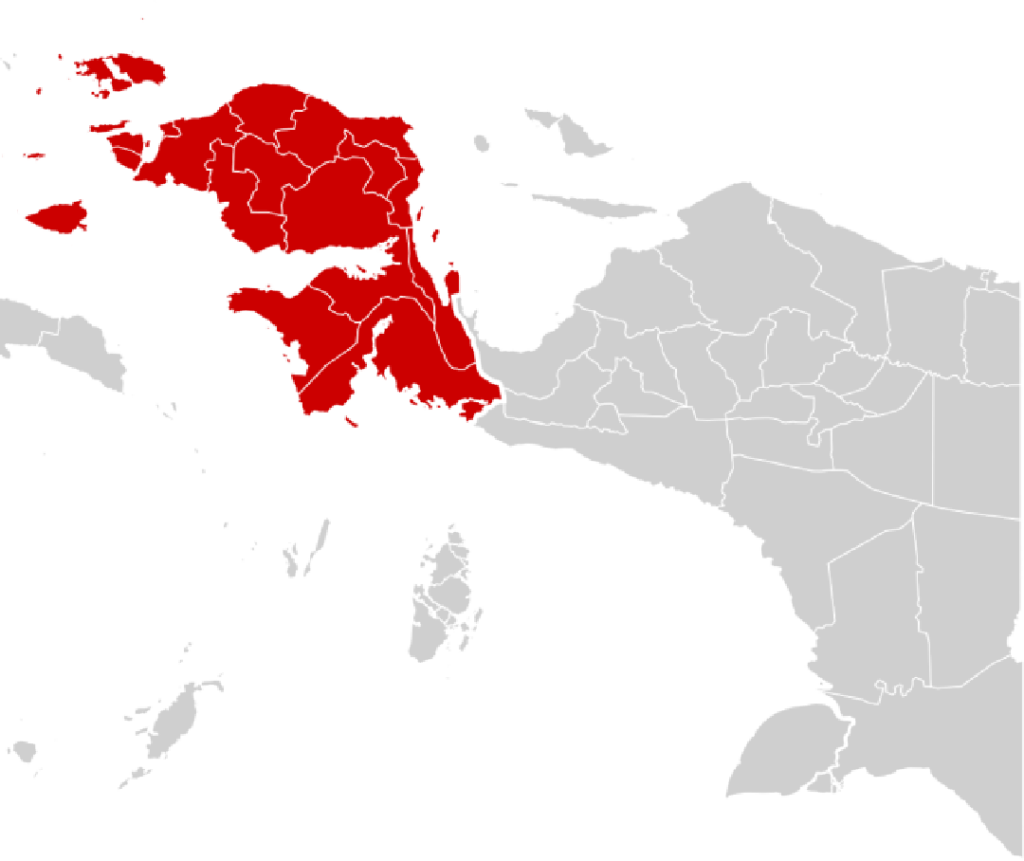In the highlands of Papua Barat Daya (Southwest Papua), where mist hugs the tree-covered hills at dawn and rivers snake through fertile plains, something remarkable is happening. For decades, the people here have been caught between natural abundance and structural neglect—blessed with rich soil, yet burdened by poverty and malnutrition. But under the determined leadership of Governor Elisa Kambu, the province is undergoing an agricultural awakening—one that aims not only to feed its people but to build a resilient, self-reliant future.
The strategy is bold: develop thousands of hectares of new farmland, invest in modern agriculture, and link this production directly to the Free Nutritious Meals Program—a flagship national effort to provide schoolchildren across Indonesia with healthy, locally sourced meals. In Papua Barat Daya, these two agendas—agriculture and child welfare—are being fused into one powerful vision of food sovereignty.
An Urgent Mission Rooted in the Land
Papua Barat Daya is Indonesia’s youngest province, carved out in 2022 to bring governance closer to its diverse communities. But it inherited deep structural challenges: food prices that soar due to dependence on imports, chronic malnutrition in rural areas, and a weak agricultural base that has not kept pace with population growth.
The statistics are sobering. As of 2024, only 0.43 thousand hectares of land were used for rice farming, producing just 1,310 tons of rice in the entire province—a figure far below the local consumption needs. Despite being surrounded by arable land, most food consumed in PBD is shipped in from Java or Sulawesi, making it expensive and unreliable, especially in the rainy season when transport routes are disrupted.
Faced with this reality, Governor Kambu took action. In a high-level meeting in Jakarta with Minister of Agriculture Andi Amran Sulaiman, she made a direct appeal: “We need urgent support to transform our agricultural landscape—not just to feed our people today, but to build a food-secure future for our children.”
Cultivating 4,000 Hectares: From Promise to Production
That meeting wasn’t symbolic. It was strategic. Governor Kambu returned from Jakarta with strengthened ties to the national government and immediately rolled out the “Cetak Sawah” (rice field printing) initiative—aimed at converting untapped land into productive agricultural zones.
The numbers are ambitious. This year alone, the government has developed 4,000 hectares of new rice fields in Sorong Selatan, with a broader target of 5,000 hectares by the end of 2025. These are not scattered plots—they are part of an integrated agricultural expansion, complete with irrigation systems, seeds, fertilizers, and machinery support under the guidance of the regional agricultural office and the Balai Penerapan Standar Instrumen Pertanian (BPSIP).
The newly opened land is not just being handed over to commercial enterprises—it’s being entrusted to local farmers, smallholder cooperatives, and indigenous communities, many of whom are forming Brigade Pangan (Food Brigades) to manage collective farming and share resources.
“This is not just about growing rice,” says Albert Korano, a local farmer and head of one such brigade. “It’s about growing dignity. For years we’ve eaten food from ships—now we want our children to eat what we grow with our own hands.”
The Nutritional Bridge: From Paddy Fields to School Kitchens
What sets PBD apart is how it’s tying agricultural production directly to social welfare through the Makanan Bergizi Gratis (MBG), or Free Nutritious Meals Program. While the MBG program is being rolled out nationally as a presidential priority, PBD is pioneering a model where local food directly supplies the kitchens that feed children.
In Sorong City alone, the MBG program has already served 3,349 students across nine schools in 2025. These meals are not sourced from bulk suppliers in other provinces—they are prepared in locally run “Dapur Sehat” (Healthy Kitchens), staffed by trained cooks and supplied with fresh produce from nearby farms and fisheries.
The province has even set a bolder target: 100 percent of MBG meals will be sourced from local production by 2027. That means no more imported rice, boxed milk, or frozen meats. Instead, students will eat meals made from fresh local vegetables, sago, fish, and tubers—foods that are not only more nutritious but also deeply tied to Papuan identity.
“Food is culture,” explains Maria Kambuaya, a nutritionist working with the MBG program. “By integrating local ingredients, we’re not just fighting malnutrition—we’re preserving cultural knowledge, supporting farmers, and reducing logistics costs.”
National Support, Local Action
To make this work, Governor Kambu has been relentless in securing support from Jakarta. In her recent visit, she called on the Ministry of Agriculture to assist with agricultural mechanization, warehouse facilities, and capacity-building programs for local farmers. Minister Sulaiman responded positively, praising PBD’s proactive stance and promising to deploy additional technical teams and equipment to support the 2025 planting season.
But the real work happens on the ground. In remote areas like Maybrat and Tambrauw, teams of agronomists, village leaders, and youth volunteers are mapping potential farmland, organizing training, and distributing input packages. In some areas, the military is assisting in land clearing and irrigation setup under a civil-military partnership.
Even more critically, the provincial government is drafting regulations to mandate the use of local ingredients in public feeding programs, thereby creating guaranteed markets for local farmers. With these regulations, every ton of rice or basket of vegetables grown locally will have a buyer—usually a school kitchen. This creates not just food, but jobs.
Obstacles on the Horizon
Despite the momentum, the challenges remain immense. Infrastructure in rural areas is minimal. Many villages are cut off during the rainy season, and without roads or bridges, transporting harvested crops to kitchens becomes a logistical nightmare.
There is also the matter of climate risk. Floods earlier this year displaced over 2,000 households in Sorong alone, submerging fields and delaying planting schedules. To address this, the province is now prioritizing climate-resilient infrastructure—canals, dikes, and drainage systems—alongside agricultural expansion.
Then there are cultural considerations. Land in Papua is often governed by customary law. Any land conversion must be negotiated with local clans, ensuring free, prior, and informed consent. In the past, large-scale agricultural projects in Papua have sparked protests for ignoring these rights. Governor Kambu has pledged to do things differently, building trust through community-based planning.
Planting the Seeds of Long-Term Change
The transformation underway in Papua Barat isn’t just about calories—it’s about capability. Every field opened, every child fed with local ingredients, and every cooperative formed is a signal of systemic change.
Experts say that what’s happening in PBD could become a national model. By linking agriculture directly to nutrition, social protection, and economic development, the province is showing how to achieve multiple SDGs at once: zero hunger, quality education, good health, and decent work.
Already, other regions in Papua are looking to replicate the model. Representatives from Papua Pegunungan and Papua Tengah have visited Sorong to learn how to establish their own healthy kitchens and MBG-integrated food systems.
For the people on the ground, the benefits are tangible. Farmers are earning steady incomes. Children are healthier and more alert in class. Local governments are spending less on imported food. And perhaps most importantly, there is a growing sense of agency—of a region reclaiming its right to nourish itself.
A Future Built on Local Food
Standing in a newly planted field in Aimas, Governor Kambu surveyed the land with a sense of urgency and pride. “We are a province rich in nature but historically poor in access,” she said. “That must change. And it starts with what we grow and what we serve our children.”
From the paddy fields of Sorong Selatan to the kitchens of Sorong City, a new narrative is emerging—one where food is not just survival, but sovereignty. The seeds planted today may well feed generations to come.
Conclusion
The government of Papua Barat Daya is making strategic and determined efforts to improve food security and reduce child malnutrition by combining agricultural expansion with the Makanan Bergizi Gratis (MBG), or Free Nutritious Meals, program. Through initiatives like the development of 4,000 hectares of new rice fields, building healthy school kitchens, and sourcing food from local farmers, the province is addressing structural challenges in food supply and education. With strong support from the central government and the involvement of local communities, Papua Barat Daya is building a sustainable food system that empowers farmers, nourishes children, and respects cultural traditions. If successful, this integrated model could serve as a national blueprint for food sovereignty and child welfare in rural


